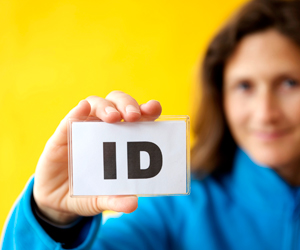
Jan. 18, 2012 – Wisconsin’s new Voter ID Law requiring voters show an acceptable photo identification document before voting officially starts with the 2012 February Spring Primary Election. An acceptable photo ID must be presented before voters can receive a ballot.
Acceptable Forms of ID
Acceptable forms of ID do not have to have a current address. The Wisconsin Government Accountability Board’s list of acceptable forms of ID include:
- A Wisconsin DOT-issued driver license, even if driving privileges are revoked or suspended
- A Wisconsin DOT-issued identification card
- A Military ID card issued by a U.S. uniformed service
- A U.S. passport
The identifications above must have an expiration date after Nov. 2, 2010.
- A certificate of naturalization that was issued not earlier than two years before the date of an election at which it is presented
- An unexpired driving receipt issued by Wisconsin DOT
- An unexpired identification card receipt issued by Wisconsin DOT
- An identification card issued by a federally recognized Indian tribe in Wisconsin
- An unexpired identification card issued by a Wisconsin-accredited university or college that contains: the date of issuance; signature of student; and an expiration date not later than two years after date of issuance
Free Voter IDs – Who is Eligible? How to Get One?
Free voter IDs are available. The law requires the Department of Transportation (DOT) to provide free ID cards to any individual who will be at least 18 years of age on the date of the next election and who requests a free ID for the purpose of voting. The regular fee is $18. Due to the need to provide a birth certificate and other documents to receive a DOT-issued ID, individuals should begin the process of obtaining a statutory identification well in advance of an election in which they wish to vote.
 Anna Kees, Marquette University Law School 2009 (concentrating on criminal law) is an associate attorney at Kim & LaVoy, S.C. in Brookfield, Wisconsin. She practices criminal defense, representing clients in municipal, state, and federal cases across Southeastern Wisconsin.
Anna Kees, Marquette University Law School 2009 (concentrating on criminal law) is an associate attorney at Kim & LaVoy, S.C. in Brookfield, Wisconsin. She practices criminal defense, representing clients in municipal, state, and federal cases across Southeastern Wisconsin.
If a voter can’t present a valid ID on Election Day, she may still cast a provisional ballot. In order to have that vote counted, the voter must either return to the polls that day with appropriate ID, or show appropriate ID to the municipal clerk by 4 p.m. the following Friday.
Residence Requirements Tighten
In order to vote in a Wisconsin district, a voter must have lived in Wisconsin for 28 consecutive days before the election. If a voter is otherwise eligible to vote, except the requirement that she moved to Wisconsin less than 28 days before the election, she is entitled to vote for the president and vice president but for no other offices.
If a voter is required to show proof of residence, her neighbor can no longer vouch for her. Documentary proof is required. Proof of residence is required for:
- First-time voters in Wisconsin who register by mail
- Voters who register within 20 days of the election
- Voters who register at the polls on Election Day
Some acceptable forms of proof include:
- a Wisconsin driver’s license or ID card
- a recent utility bill
- a bank statement
- a paycheck
- an affidavit from a social service agency identifying a homeless voter
- a college ID (only if the voter provides a recent fee receipt for the ID or the institution provides a certified housing list to the municipal clerk)
Early Voting Time Cut in Half
In previous years, early voting began a month before the election and continued until Election Day. In 2012, early voting will begin on the 15th day before the election and end on the Friday before the election. This change in the law cuts the early voting period by more than half.
Absentee Voting Stricter Standard
Voters may automatically receive absentee ballots for every election held in 2012. But if a voter fails to return any absentee ballot for any election the clerk will stop sending her ballots automatically.
Special Registration Deputies
The Government Accountability Board no longer trains statewide Special Registration Deputies (SRDs). SRDs must be appointed by local election commissioners and municipal clerks to collect registration forms within a municipality. An SRD can serve more than one municipality, but he/she must register with each. SRDs must turn in all registration forms by 5 p.m. on the 20th day before the election and cannot collect registrations less than 20 days before an election.
For much more in-depth information, and for answers to frequently asked questions, please visit the Government Accountability Board’s Bring it to the Ballot web page.
This article is published courtesy of the December 2011 State Bar Young Lawyers News, published by the State Bar Young Lawyers Division.
